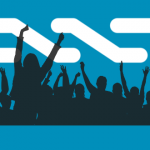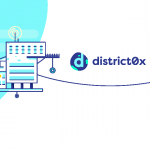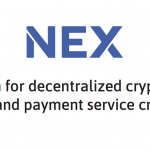Shortened as FTC, the Feathercoin is a secure and open-source digital currency that uses the proof of work system to facilitate transactions. It was created and launched in 2013 by Peter Bushnell, making it one of the oldest digital currencies.
On a technical level, Feathercoin started off not being significantly different from Litecoin; the only change was an increase in the final currency supply from 84 million to 336 million. Later on, however, the currency developed other small differences; one change is faster difficulty retargets, allowing the network to adjust more quickly to changes in network power.
HISTORY.
As mentioned, Feathercoin is a fork of Litecoin. One of the most basic steps of creating an altcoin is to create a new genesis block. This is the block that the entire blockchain will build off of, and is one of the key differentiators between coins.
But bushstar, didn’t/couldn’t create his own genesis block. Instead he reused the Litecoin genesis block, and put in a hardfork at the first block. This makes feathercoin a fork of Litecoin, a “distinction” that few coins have.
Additionally, the coin was launched with bare minimum difficulty, so it was instamined to an extreme degree, as shown below.
Feathercoin was marketed very similar to how Litecoin was. Feathercoin was the “bronze” to Bitcoin’s gold, and had parameters relative to Litecoin equivalent to Litecoin’s parameters relative to bitcoin. This strategy worked quite well, and feathercoin captured significant market share.
FEATURES.
Neoscrypt hashing algorithm.
The project’s main innovation is Neoscrypt, a new type of memory-intensive hashing algorithm that makes it difficult to mine coins with specialist hardware, such as FPGA and ASIC miners … normally the heavyweight machines of the cryptocurrency mining world.
FGPA and ASIC miners throw large amounts of custom-designed computing power at the mathematical problems used for mining. Neoscrypt, which is similar to Litecoin’s Scrypt, is designed using an algorithm that favors CPU and GPU miners. As a result, it makes it easier for those without large sums of money to get in on the cryptocurrency mining game.
Part of the reason for that is Neoscrypt ‘s use of memory-intensive operations, which are more suited to CPUs, and which have been adapted to GPUs for Litecoin and feathercoin.
Fast.
Despite the fact that it uses the proof of work system, which was regarded as time-consuming, FTC transactions are predominantly fast, scalable and secure. A block transaction takes an average of 60 seconds.
Advanced check pointing.
This system creates a central node through which the software can monitor Feathercoin transactions and ensure that no one is able to able to launch a “51%” attack. A 51% attack would allow a miner who controls 51% of all mining production to essentially double spend Bitcoins.
How advanced Checkpointing works.
Checkpointing is a lesser known part of cryptocurrencies. It’s a way to maintain the integrity of the block chain by recording blocks out of it. In bitcoin, checkpoints are stored in the code of the client. This enables it to verify its checkpoints against the copy of the block chain it has downloaded, ensuring that block chain has not been retroactively rewritten in a 51% attack.
This means that as the block chain grows, client software has to be updated to store new checkpoints within its code. This leaves clients that have not been updated for a long time vulnerable to attacks on the block chain.
The Feathercoin team has sought to solve this problem by separating the checkpoint record from the client software. The team have created a “master node” , which will publish the series of checkpoints for Feathercoin clients to check against.
While it would be difficult for a 51% attack to be carried out against a network as large as Bitcoin’s, Feathercoin has already suffered a 51% attack. The basic checkpoint system that was in place at the time fortunately helped prevent long term damage to the currency.
Multisig.
Multisignature (often called multisig) is a form of technology used to add additional security and for bitcoin transactions. Multisignature addresses require another user or users sign a transaction before it can be broadcast onto the block chain. The Feathercoin multisig feature allows users to make comments in blockchain transactions.
4-year halving.
One of the basic things about Bitcoin based cryptocurrencies is they are deflationary. That is the amount of currency gradually decreases, not increases like the inflation or gradual easing of Fiat currency.
Fiat currency is legal tender whose value is backed by the government that issued it. The U.S. dollar is fiat money, as are the euro and many other major world currencies. This approach differs from money whose value is underpinned by some physical good such as gold or silver, called commodity money
One ways Crypto currencies are deflationary is by halving the value of the mining rewards every so often, in FTC case, 4 years. This is input into the code to occur at a certain block number. In practice, the block times are only approximate, depending on the number of miners / hash rate. Variation in hash rate can only be corrected for afterwards, which will tend to delay the halving beyond exactly 4 years.
BLOCKCHAIN PARAMETERS.
- Neoscrypt Algorithm.
- Current Gen ASIC resistance.
- 80 Coin reward per block.
- 336 million coins total.
- Block target is 1.0 minutes.
- Block reward halves every 2,100,000 blocks.
- Retarget every block with 15, 120 and 480 block averages and 25% damping.
- Default Feathercoin network port is 9336.
- Default RPC mining port is 9337.
- eHRC (enhanced Hash Rate Compensation).
- ACP (Advanced Checkpointing).
- Proof of Work Consensus Mechanism.
FEATHERCOIN (FTC) OVERVIEW.
Current coin Value: $0.066623 (5.33%).
Market Cap: $11,583,955.
24hr volume: $1,163,230.
Circulating Supply: 173,873,480 FTC.
Max. Supply: 336,000,000 FTC.
(As of 1/9/2017).
There are 336 million FTCs available. Miners are also rewarded with 200 coins each time they mine a block. This number will be halved after 840,000 Feathercoins are mined. Further, whereas Bitcoin is set up to generate a block every 10 minutes, Feathercoin sets its target at every 2.5 minutes. The creators of Feathercoin believe that the higher limit and larger supply of newly created Feathercoins will make the currency itself more widely used and stable.
Exchanges.
Buying and selling of the Feathercoin is available on several exchanges including:
Users can also use the Coinnector and Shapeshift services to trade in their digital coins.
Wallets.
Feathercoin wallet.
What makes the Feathercoin wallet standout is its In-wallet plugins for third party services. These plugins include:
- Coinnector is a real-time service that lists FTC on the Alternate coin exchanges.
- The Shapeshift plugin is a service similar to Coinnector, but with more advanced features. Users can trade their cryptocurrencies without having an account.
- The Bitmessage plugin is a peer to peer messaging system that allows users to pass invoices and addresses in an anonymous manner. This plugin is open source and does not pass through any central server.
Wallet Downloads:
- Windows 64-bit:https://github.com/FeatherCoin/Feathercoin/releases/download/v0.9.6.1/Feathercoin-0.9.6.1-win64-setup.exe.
- Windows 32-bit: https://github.com/FeatherCoin/Feathercoin/releases/download/v0.9.6.1/feathercoin-0.9.6.1-win32-setup.exe.
- Mac: https://github.com/FeatherCoin/Feathercoin/releases/download/v0.9.6.1/Feathercoin-Qt-0.9.6.1.dmg.
- Linux: https://software.opensuse.org/package/feathercoin.
- Android: https://play.google.com/store/apps/details?id=com.feathercoin.wallet.
Feathercoin paper wallet.
A paper wallet generator allows you create addresses and store them without installing the coin software or wallet to a computer or downloading.
The online address generators use the Crypto currency rules inside the daemon to generate valid address. The online wallet generators sometime add extra entropy to the random number generator by including mouse movements or key presses.
Get your paper wallet here: https://walletgenerator.net/?currency=Feathercoin
Mining Feathercoin.
Mining is the act of using computational processing power to verify transactions on the Feathercoin network. As a reward for this effort a miner is given Feathercoins. Mining can be done on either computer processors (CPUs) or graphics cards (GPUs), however at this time GPU mining is the most efficient and best publicly available option.
Solo mining.
It is not recommenced to try mining solo unless you have a lot of hashing power like 8x GTX1070 or something in this ballpark otherwise its very unlikely that you will ever mine a block by yourself and you may wait long periods without gaining a block.
All you need is:
- Your Feathercoin wallet (feathercoin-qt.exe) fully synced. You have to have the wallet running while mining!
- A feathercoin.conf file in the data folder of the feathercoin wallet (wherever you installed feathercoin\data\feathercoin.conf).
Mining Software
Pool mining.
Should you wish to earn more coins than the usual, you can participate in some Feathercoin mining pools online. Although pooled mining offers a lot of advantages compared with solo mining, you also have to consider some factors like pool fees and required number of confirmations when it comes to payouts.
The Feathercoin community really tries to push P2Pool as a best option for mining. P2Pool provides a good combination of pooled mining with the decentralization of solo mining.
- http://p2pool.neoscrypt.de – A list of P2Pool nodes.
- Give-Me-Coins.
- Mining Pool Hub.
- The Blocks Factory.
Feathercoin calculator.
Indeed, mining necessitates time, effort, and ample computing power to make profits. To this end, miners are encouraged to determine their mining profitability through the use of Feathercoin calculator. By simply keying in the difficulty, block reward, hash rate along with other details like exchange rate, power consumption, and hardware costs; you can see your estimated expected earnings in your desired time frame.
Borderless payments.
The peer-to-peer technology used for feathercoin is designed to create borderless payments. In fact, feathercoin is working on open source projects for ATMs and Point of Sale equipment. Right now, it can be cumbersome to use cryptocurrencies. In many cases, it’s hard to use cryptocurrencies in “real world” transactions that take place offline.
That might change if feathercoin’s projects come to fruition. Physical, laser-etched coins and access to the cryptocurrency easily at Point of Sale terminals and ATMs really set this digital currency apart.
IN CLOSING.
Feathercoin main downside is the use the proof of work system which by some is considered to be relatively slow. Despite the fact that Feathercoin transactions are fast, confirmation might take a considerable amount of time. However, Feathercoin has a well-balanced production model and development support makes it a secure and reliable digital currency. The fact that it works towards complementing the features of other digital currencies makes it more appealing.
[currencyprice currency1=”FTC” currency2=”usd,eur,btc”]
[currencygraph currency1=”FTC” currency2=”usd”]




















